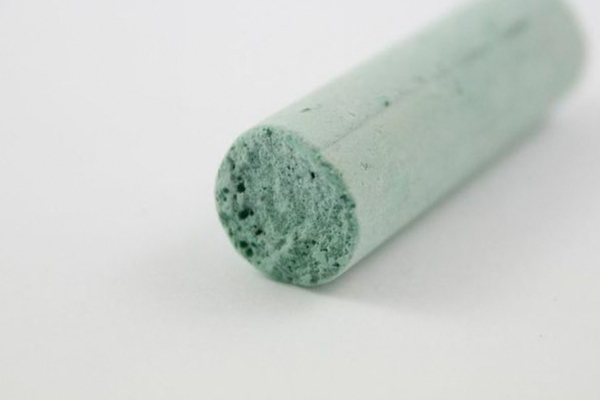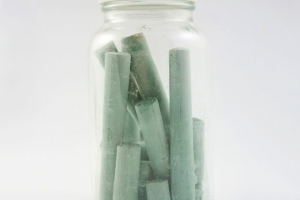
Chalk sticks, used as writing and drawing implements by maths teachers and artists alike, were traditionally made out of natural chalk - a soft and porous sedimentary rock composed of calcium carbonate deposits formed over about 90 million years from the compression of the decomposing skeletons of phytoplankton (tiny marine algae), on the ocean floor. Chalk has been used as a pigment in art since the Palaeolithic era, and became particularly popular in the 15th century amongst Early Renaissance artists.
A lot of the children's coloured chalks, artists' pastels and 'pavement chalks' we use now are made from softer and less expensive calcareous materials like gypsum (calcium sulphate). However, anxieties over the potential health hazard of the blackboard dust generated by these cheaper materials led to the development of 'dustless' classroom chalks: these chalks primarily use calcium carbonate (natural chalk) as their raw material, and are extruded as a 'rope' of chalk. This process of extruding calcium carbonate makes the chalk particles heavier so they fall straight to the ground, rather than flying around as dust.
Impurities in chalk deposits naturally produce chalks of different colours, but pigments, in this case a sage green, are added to make colours more vivid. In order to make chalk sticks, the chalk or gypsum is pulverized to a fine powder, mixed with a binder (like clay), water and a pigment to form a putty, then formed into cylinders and baked.
Sample ID: 41
Add materials you find interesting to your own selections.
Use the  button to select a material and get started.
button to select a material and get started.




